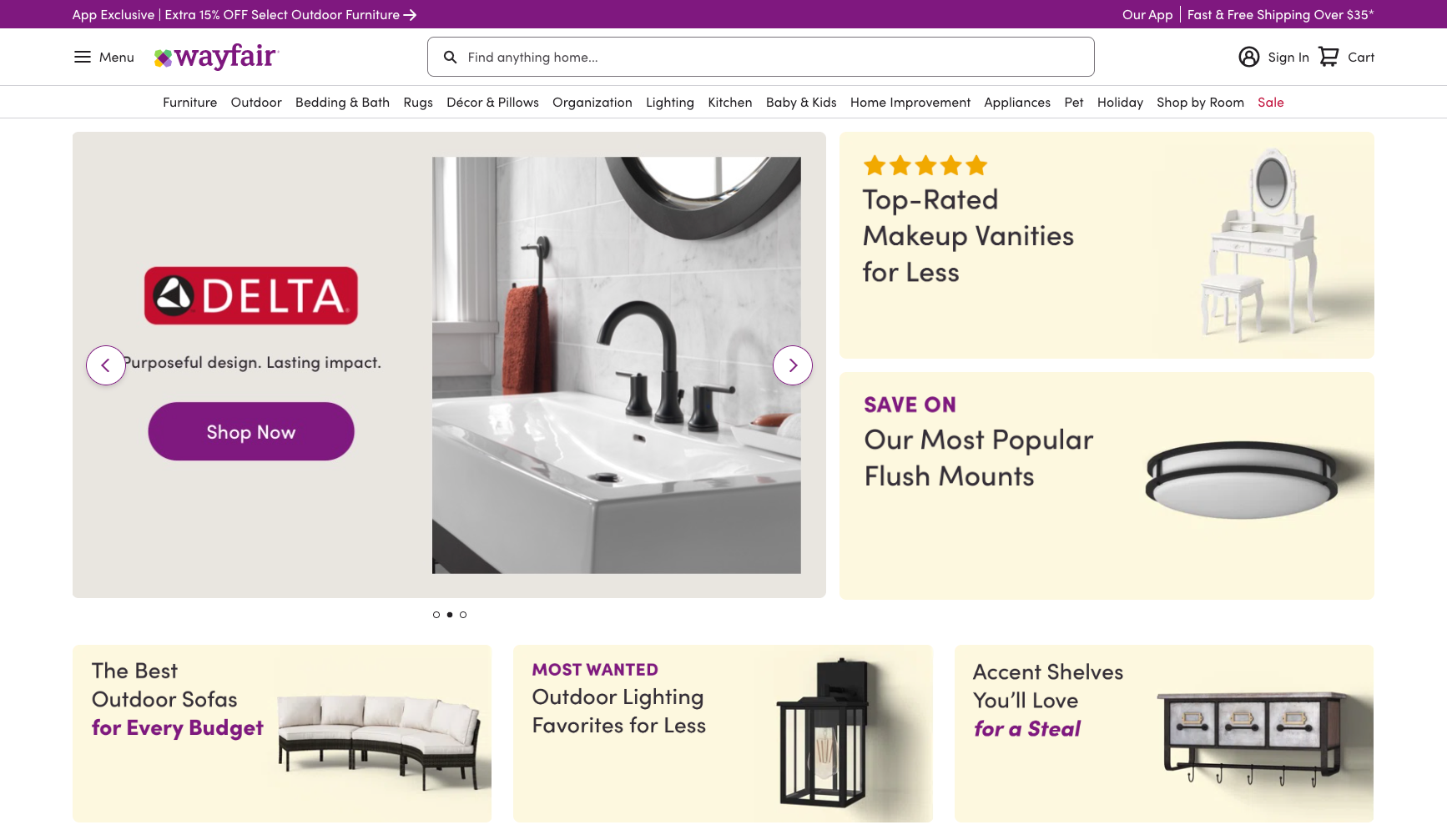The Benefits and Challenges of eCommerce During a Recession
Economic recessions can be tough on businesses of all types, from large corporations to small mom-and-pop shops. During a recession, consumers often cut back on spending and become more cautious about where and how they allocate their resources. This can make it difficult for businesses to stay afloat, particularly those that rely on in-person sales and foot traffic.
However, there is one type of business that may be particularly well-suited to weathering economic downturns: e-commerce retailers. E-commerce offers several unique advantages during a recession, such as the ability to reach a wider audience, reduce overhead costs, and find new revenue streams.
Of course, e-commerce is not without its challenges during a recession, too. Shipping costs may rise, competition may intensify, and consumer spending may drop. However, with the right strategies and approach, e-commerce retailers can navigate these challenges and come out on top.
In this article, we’ll explore some of the specific challenges that e-commerce retailers face during a recession, as well as strategies for overcoming them. We’ll also highlight case studies of e-commerce retailers that have successfully navigated a recession and offer some suggestions for how other e-commerce retailers can follow in their footsteps.
Benefits of eCommerce During a Recession
During a recession, e-commerce can offer several unique advantages that may not be available to traditional brick-and-mortar retailers. Some of the benefits of e-commerce during a recession include:
- Reduced overhead costs: E-commerce retailers often have lower overhead costs than traditional retailers, as they don’t need to maintain physical storefronts or pay for as many employees. This can be particularly advantageous during a recession when businesses are looking to cut costs wherever possible.
- Ability to reach a wider audience: E-commerce retailers can sell to customers all over the world, without the need for a physical storefront in each location. This can help e-commerce retailers to reach a wider audience, even if local consumer spending is down.
- Flexibility in pricing: E-commerce retailers can be more flexible in their pricing than traditional retailers, which may be more constrained by the costs of maintaining a physical storefront. For example, e-commerce retailers may be able to offer discounts or promotions more easily than brick-and-mortar stores, which can help to attract budget-conscious consumers during a recession.
- Opportunity to find new revenue streams: E-commerce retailers may have more opportunities to find new revenue streams during a recession than traditional retailers. For example, an e-commerce retailer may be able to pivot to selling a new product line that is in high demand during a recession, such as home office equipment or DIY tools.
Overall, e-commerce can be an attractive option for retailers during a recession, as it offers unique opportunities to reduce costs, reach a wider audience, and find new revenue streams. However, it’s important to keep in mind that e-commerce is not without its challenges during a recession, too. In the next section, we’ll explore some of the challenges that e-commerce retailers face during a recession, and how they can overcome them.
Challenges Facing eCommerce Retailers During a Recession
While e-commerce can offer several advantages during a recession, it’s not without its challenges, too. Here are some of the main challenges that e-commerce retailers may face during a recession:
- Increased shipping costs: Shipping costs may rise during a recession, as shipping carriers face increased demand and higher operating costs. This can be particularly challenging for e-commerce retailers that offer free or low-cost shipping, as they may need to absorb these additional costs themselves.
- Decreased consumer spending: During a recession, consumers may cut back on spending across the board, including on e-commerce purchases. This can make it harder for e-commerce retailers to generate revenue and stay afloat.
- Heightened competition: As more retailers turn to e-commerce during a recession, competition in the online space may increase. This can make it more difficult for e-commerce retailers to stand out from the crowd and attract customers.
- Limited resources: E-commerce retailers may have limited resources to weather a recession, particularly if they are smaller or newer businesses. This can make it challenging to invest in marketing, technology, or other areas that can help e-commerce businesses thrive.
To overcome these challenges, e-commerce retailers may need to be creative and strategic in their approach. In the next section, we’ll explore some of the strategies that e-commerce retailers can use to overcome the challenges discussed above and thrive during a recession.
Strategies for Overcoming eCommerce Challenges During a Recession
While e-commerce retailers may face challenges during a recession, there are several strategies that they can use to overcome these challenges and thrive. Here are some strategies that e-commerce retailers can use to overcome the challenges discussed in the previous section:
- Optimize shipping and fulfillment: To overcome increased shipping costs, e-commerce retailers may need to optimize their shipping and fulfillment processes. This could include negotiating better rates with shipping carriers, investing in more efficient packaging and shipping materials, and using data to optimize shipping routes and delivery times.
- Focus on value: To overcome decreased consumer spending, e-commerce retailers may need to focus on providing value to customers. This could include offering discounts, promotions, or loyalty programs, as well as emphasizing the quality and value of their products or services.
- Differentiate from competitors: To overcome heightened competition, e-commerce retailers may need to differentiate themselves from competitors. This could involve developing a unique brand or product offering, emphasizing customer service or support, or investing in marketing or advertising to stand out in a crowded online space.
- Embrace new revenue streams: To overcome limited resources and find new revenue streams, e-commerce retailers may need to be creative and adaptable. This could involve pivoting to selling new product lines or services that are in high demand during a recession, such as home office equipment, home fitness equipment, or educational resources for children.
- Emphasize the convenience of e-commerce: To overcome the challenges of a recession, e-commerce retailers can emphasize the convenience of online shopping compared to traditional brick-and-mortar shopping. For example, e-commerce retailers can promote the ease of ordering from home, the ability to easily compare prices and products, and the convenience of doorstep delivery.
Overall, by using these strategies, e-commerce retailers can overcome the challenges of a recession and thrive in the online space. Additionally, it’s important for e-commerce retailers to remain flexible and adaptable, as the challenges and opportunities of a recession may continue to evolve over time.
To better understand how e-commerce retailers have navigated a recession, let’s take a look at some case studies:
1. Amazon: During the 2008 recession
Amazon was already a well-established e-commerce giant. However, the company still faced challenges, including decreased consumer spending and increased competition. To overcome these challenges, Amazon invested heavily in expanding its product lines and streamlining its operations. Additionally, the company continued to prioritize customer service and satisfaction, which helped to differentiate it from competitors. By focusing on these strategies, Amazon was able to continue growing during the recession and has since become one of the most valuable companies in the world.

Amazon in 2008
2. Wayfair: During the COVID-19 pandemic
Wayfair, an online retailer specializing in home goods, experienced a surge in demand as consumers turned to online shopping for home furnishings. However, the company still faced challenges, including disrupted supply chains and increased competition from other e-commerce retailers. To overcome these challenges, Wayfair invested in expanding its supply chain capabilities and improving its delivery times. Additionally, the company focused on developing its brand and product offerings to stand out in a crowded market. As a result, Wayfair experienced record sales growth in 2020 and has continued to thrive in the online space.

3. Bonobos: During the COVID-19 pandemic
Bonobos, a men’s clothing retailer, faced significant challenges during the COVID-19 pandemic, as consumers cut back on discretionary spending. To overcome these challenges, Bonobos pivoted to focus on selling more casual and comfortable clothing, such as loungewear and athleisure. Additionally, the company invested in digital marketing and advertising to reach new customers and promote its products. By adapting to changing consumer needs and investing in its online presence, Bonobos was able to maintain its revenue during a difficult period for the retail industry.

These case studies highlight the importance of being adaptable and strategic in navigating a recession as an e-commerce retailer. By investing in operations, differentiating from competitors, and adapting to changing consumer needs, e-commerce retailers can continue to thrive even in challenging economic conditions.
Conclusion
In conclusion, while a recession can be a challenging time for e-commerce retailers, there are many strategies that they can use to overcome these challenges and continue to thrive. By focusing on providing value to customers, differentiating from competitors, and adapting to changing consumer needs, e-commerce retailers can navigate a recession successfully. Additionally, by emphasizing the convenience and safety of online shopping, e-commerce retailers can appeal to consumers who may be hesitant to shop in physical stores during a recession.
Furthermore, case studies of successful e-commerce retailers during recessions have shown the importance of being adaptable and strategic in the face of economic challenges. Whether it’s investing in operations, expanding product lines, or pivoting to new revenue streams, e-commerce retailers must be willing to adapt to changing market conditions to succeed.
Overall, the benefits of e-commerce during a recession are clear, and with the right strategies and mindset, e-commerce retailers can continue to grow and thrive even in challenging economic conditions. By remaining focused on their customers and their business goals, e-commerce retailers can emerge from a recession stronger than ever before.








